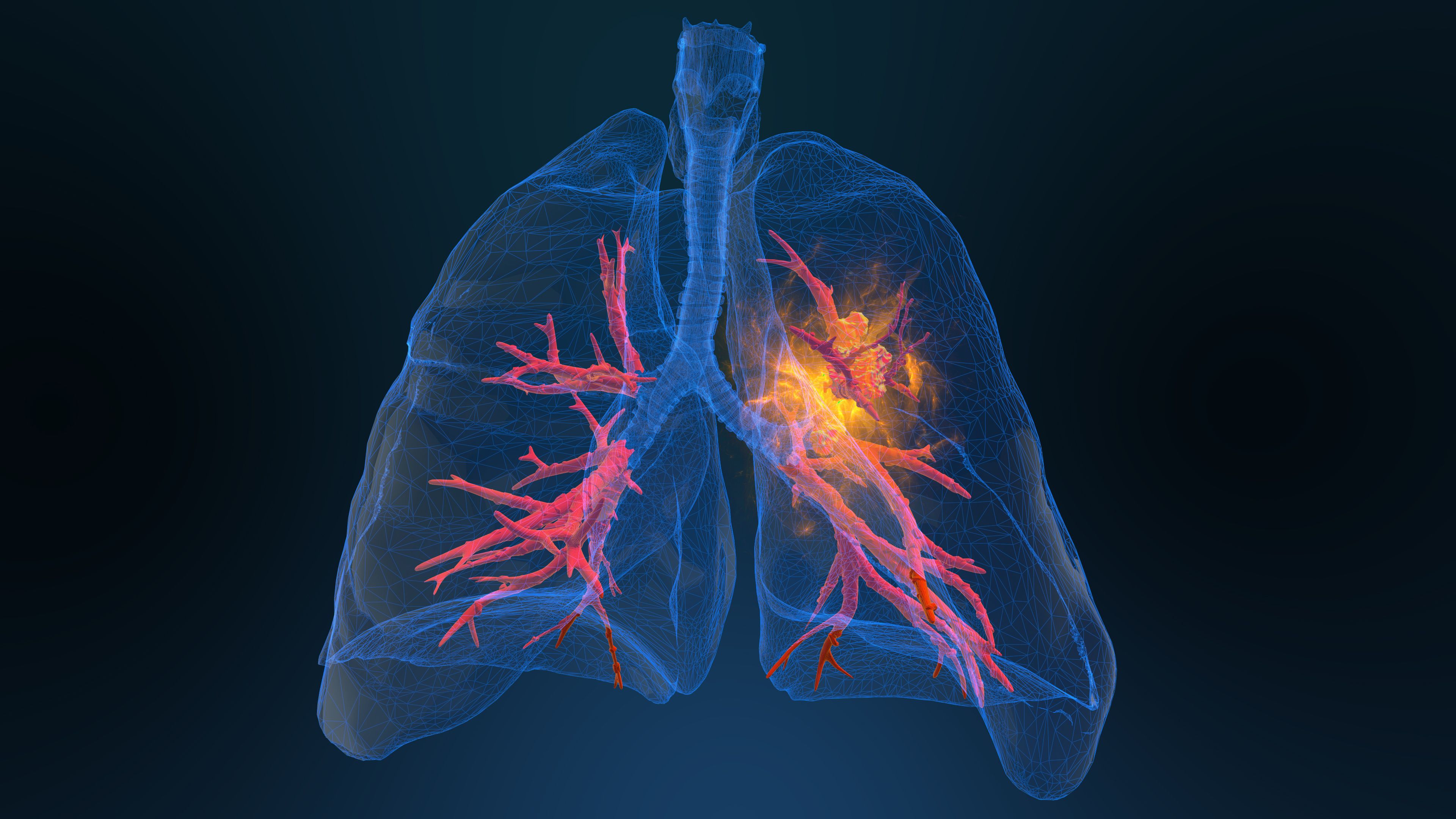News
Article
Trastuzumab Deruxtecan Shows Clinical Benefit as Second-Line Therapy for Lung Cancer
Author(s):
In many countries, trastuzumab deruxtecan is the only HER2-targeted therapy approved for patients with this HER2–mutant metastatic non-small cell lung cancer.
Trastuzumab deruxtecan (T-DXd) administered at doses of 5.4 mg/kg and 6.4 kg/mg may produce a significant clinical benefit for patients with human epidermal growth factor receptor 2–mutant (HER2m) metastatic non-small cell lung cancer (mNSCLC), according to the results of a recent study published in the Journal of Clinical Oncology. There is an urgent need for second-line HER2-targeted therapies for HER2m mNSCLC because HER2 mutations may drive up to 4% of nonsquamous NSCLCs, according to the investigators.
Image credit: appledesign | stock.adobe.com

The DESTINY-Lung02 trial was conducted to find the safety and efficacy of T-DXd 5.4 mg/kg and T-DXd 6.4 mg/kg for patients with previously treated HER2m mNSCLC. The study’s primary endpoint was confirmed objective response rate (ORR). At a median follow-up, patients taking 5.4 mg/kg had a confirmed ORR of 49.0% (95% CI, 39.0 to 59.1) and those taking T-DXd 6.4 mg/kg had a confirmed ORR of 56.0% (95% CI, 41.3 to 70.0).
Investigators of the blinded, multicenter, phase 2 study randomized 152 patients with HER2m mNSCLC who had already received platinum-containing therapy in a 2:1 ratio, with patients receiving T-DXd at a dose of 5.4 or 6.4 mg/kg once every 3 weeks.
T-DXd is the only HER2-targeted therapy for this patient population in many countries, the investigators noted. In the DESTINY-Lung01 trial, T-DXd 6.4 mg/kg demonstrated a 54.6% ORR, 10.6-month duration of response (DoR), 8.2-month median progression-free survival (PFS), and 18.6-month median overall survival (OS).
T-DXd 5.4 mg/kg has been shown to be a safe and effective second-line treatment for HER2m mNSCLC. This conclusion is also based on secondary endpoints of disease control rate and DoR. Median DoR was 16.8 months with 5.4 mg/kg, and not estimable for 6.4 mg/kg.
PFS and OS were other secondary endpoints, but because a significant number of patients did not have disease progression or death, determining median PFS or OS requires more follow-up.
Both doses of T-DXd had a manageable safety profile, and investigators report no new safety signals. The most common treatment-emergent adverse events (TEAEs) include gastrointestinal and hematologic events and fatigue. Low grade interstitial lung disease/pneumonitis is a significant risk factor, affecting 12.9% and 28.0% of the 5.4 mg/kg arm and 6.4 mg/kg arm, respectively. More patients in the 6.4 mg/kg arm experienced grade 3 or higher TEAEs (58.0%) compared to the 5.4 mg/kg arm (38.6%).
The exclusion of a non–T-DXd comparator arm was a limitation of the study, the authors said, but further research is evaluating T-DXd 5.4 mg/kg in different settings. This includes the DESTINY-Lung04 trial, which is evaluating T-DXd 5.4 mg/kg monotherapy as a first-line treatment for patients with HER2m mNSCLC against chemotherapy plus pembrolizumab (Keytruda; Merck).
“The more favorable benefit/risk profile observed with T-DXd 5.4 mg/kg supports the use of this dose for patients with previously treated HER2m mNSCLC and reinforces T-DXd as the standard of care in this population,” the study authors concluded.
Reference
Goto K, Goto Y, Kubo T, et al. Trastuzumab Deruxtecan in Patients With HER2-Mutant Metastatic Non–Small-Cell Lung Cancer: Primary Results From the Randomized, Phase II DESTINY-Lung02 Trial. 2023. Journ of Clin Onc. DOI: 10.1200/JCO.23.01361
Newsletter
Stay informed on drug updates, treatment guidelines, and pharmacy practice trends—subscribe to Pharmacy Times for weekly clinical insights.






